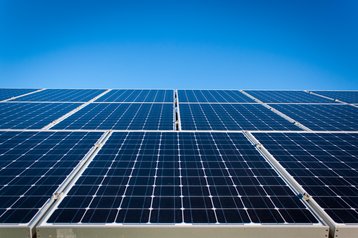Solar power could be used to cost-effectively meet the energy needs of data centers located in cold environments as grid energy prices surge, according to new research.
The study, from scientists at Aalto University in Finland and Hokkaido University in Japan, also shows that waste heat recovery is possible from data centers in areas where temperatures are low.
Published in the Renewable and Sustainable Energy Reviews journal, the authors of the study, entitled Potential of solar photovoltaics and waste heat utilization in cold climate data centers, said: “Local renewable energy production and waste heat utilization are still rarely used in data centers, even though recent high electricity prices have considerably increased the economic value of self-generation and energy efficiency investments.
“The benefits and cost-effectiveness of data center sustainability measures have also not yet been thoroughly researched in cold-climate regions, where the data center industry is currently growing rapidly.”
Many data center operators are looking to countries with cold climates to locate new facilities, taking advantage of the low ambient temperatures to help cool their IT equipment more cost-effectively. This has led to growth in markets such as Norway and Iceland. Finland is also starting to become a popular destination, and in December 2023 atNorth announced plans for a 600MW campus at Kouvala, north east of capital city Helsinki.
And while many operators claim to use solar energy to power their data centers, this usually comes via power purchase agreements to provide renewable electricity to the grid and offset their fossil fuel consumption, rather than directly using the energy themselves.
For their research, the team simulated a range of scenarios based on the power requirements and output data centers in Finland and Japan. They looked at different types of solar photovoltaic (PV) power generating systems and heat reuse methods and compared the cost-effectiveness of such systems when different electricity prices are factored in.
“The modeled results indicate that solar PV systems can cost-effectively be used to provide renewable electricity to data centers in both Finland and northern Japan, with electricity prices having the largest influence on economic performance,” the researchers said.
Electricity prices surged in 2022 due to Russia’s invasion of Ukraine, which resulted in problems with energy supply chains.
The paper said: “The use of larger external PV systems is shown to be cost-effective at the higher electricity prices seen in 2022, whereas smaller rooftop PV systems and grid electricity provide more economic benefits at 2019 price levels.
“Selling surplus PV electricity to the grid and using waste heat for district heating is also shown to be effective in data centers located in Finland, whereas battery storage and snow melting are better suited to utilize surplus PV electricity and data center waste heat in northern Japan.”







